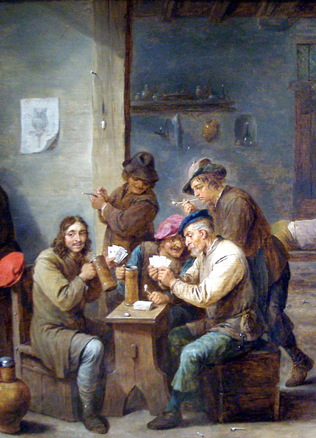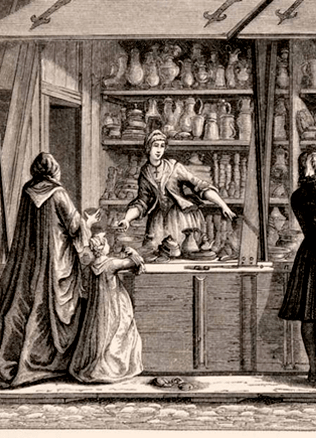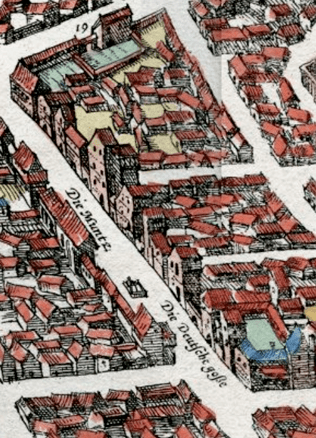The Prague groschen – the international currency of the later Middle Ages
The Prague groschen struck in Czechia was referred to as the Czechian or the wide groschen in the written sources of the Grand Duchy of Lithuania. The latter coin was a foreign coin that circulated in the Grand Duchy of Lithuania in the 15th century most widely. It had the greatest influence on the cash turnover of the Grand Duchy of Lithuania at that time.
The most popular coin of Central and Eastern Europe
The Prague groschen (Lat. grossi Pragenses) were started to be struck during the time of the reign of King Wenceslaus II of Bohemia around 1300. The exterior of the coins was copied from the French “gros tournois.” Abundant silver mines discovered in Kutna Hora in which more than 6 500 kg of hallmark 930-937 silver were extracted per year determined the beginning of coin minting. This allowed up to 1.7 million coins to be struck. At the beginning the groschen weighed 3–3.86 grams and bore the hallmark of 930–937. Later the mass of the groschen and the hallmark decreased. After 1350, the mass of the coins was about 3.58 grams and the hallmark was 870. In 1379, during the years of the reign of Wenceslaus II of Bohemia (1378–1419), the mass of the coins decreased to 2.9 grams and the hallmark went down to 820. In the years of the reign of George of Podebrady (Jiřií z Poděbrad, 1458–1471) the mass of the coins was 2.7 grams, and from 1485, under the reign of King Wenceslaus II (1471–1516), the hallmark of the coins was 438. The mass of the coins struck by Ferdinand I, King of Bohemia and Hungary who was the last to mint the Prague groschen, was about 2 grams, and the hallmark was 422. The Prague groschen were struck until 1547. Due to rather constant, as compared with other coins of that time, sizes, masses, and hallmarks and due to the unchanged design of the coins (the averse represented the crown and the reverse pictured a lion) these coins were popular all over Central and Eastern Europe.
Do You Know?
The Prague grosch was a foreign coin which circulated in the Grand Duchy of Lihtuania most widely in the 15th centuy.The Prague groschen were cut into three or four parts in Lihtuania and in this form were used to settle accounts.
Influence of the Prague groschen on the monetary system of the Grand Duchy of Lithuania
In the second half of the 14th– the first half of the 15th century, the Prague groschen became the main coin of large denomination in Central and Eastern Europe because other countries did not have their silver mines and could not mint valuable coins. The groschen of Wenceslaus II were most widespread in that region. In the Grand Duchy of Lithuania the early Prague groschen were discovered in the most developed Halych-Volhynia region where these coins served trade, they spread more widely during the time of the reign of Emperor Charles IV (1346–1378). A larger amount of the Prague groschen got into the Grand Duchy of Lithuania at the end of the 14th century only, and a massive influx of these coins started in the 15th century. These were the groschen of Wenceslaus II and the groschen bearing the name of this Ruler struck in the time of the Hussites until 1423–1424. A large amount of the Prague groschen of Wenceslaus II was determined by several reasons. The largest number of the Prague groshen was struck with the name of that Ruler. It was during the reign of Wenceslaus II that the Grand Duchy of Lithuania introduced its own monetary system. Furthermore, during the time of the reign of the Hussites, the Grand Duchy of Lithuania maintained close relations with the Czech Republic, in 1422–1423 Vytautas was even proclaimed King of Bohemia, and Zigmantas Kaributaitis was declared to be his deputy.
In the 15th century the Prague groschen became a part of the monetary system of the Grand Duchy of Lithuania, and they also became raw material for its own coins.
The groschen of the later Rulers were also in circulation in the Grand Duchy of Lithuania but their role was insignificant. The number of those coins was smaller, and a sufficient amount of the old groschen was still in circulation. At the beginning of the 15th century, especially after 1410, the Prague grosch became the main large coin of the Grand Duchy of Lithuania. The Prague grosch was started to be withdrawn from circulation at the end of the 15th century. This lasted until 1535 when the groschen of the Grand Duchy of Lithuania were issued.
Treasure troves in Lithuania
The value of the grosch was not stable. At the end of the 14th century it was equal to 4 denarius of the Grand Duchy of Lithuania, at the beginning of the 15th century – to 10 denarius, in the second quarter of the 15th century – to 12 denarius, from the middle of the 15th century – to 10 denarius. At the beginning of the 16th century, when buying groschen, their official exchange rate was 14 denarius, however, their real value was about 20 denarius of Alexander. From the second quarter of the 15th century the Prague groschen was the main silver raw material when minting coins of the Grand Duchy of Lithuania.
More than 2 000 Prague groschen have been discovered in the territory of current Lithuania, the largest part of them (more than 95 %) being the groschen of Wenceslaus II.
The groschen of Charles I constitute a mall part – 37 pieces (1.7 %), the groschen of Wenceslaus II (8 pieces) and Ferdinand I (one piece) have also been discovered. About 50 pieces (2.3 %) of groschen have not been determined to have belonged to any certain ruler. The largest part of coins has been found in the treasure troves (as many as 19 treasure troves are known). Only three treasure troves containing the Prague groschen discovered in Lithuania are dated back to the end of the 14th century (Raudondvaris, Vilnius regions; Skraičioniai, Alytus region and Vilnius Lower Castle). Two treasure troves were found with the coins struck by Vytautas in 1411 (Trakų Vokė and Verkiai), four treasure troves – with the groschen of Casimir (Alovė, Aluona-Šklėriai, Krūminės and Labanoras). Another five treasure troves, including the largest of them – Vilnius, Gvazdikų Street one discovered in 1994 (992 pieces) consisted of the Prague groschen only. All of them are dated back to the last quarter of the 15th century. The Prague groschen have been discovered in ten burial grounds (15 pieces) and individually (about 70 pieces). The largest treasure troves of the Prague groschen in the territory of the Grand Duchy of Lithuania have been discovered in the territories of current Belarus (Minsk region) and Ukraine (Chernigov region) – 6 173 and 3 487 pieces, respectively.
The Prague groschen performed another role in cash circulation in the Grand Duchy of Lithuania. At the end of the 14th century, when the Grand Duchy of Lithuania started to strike its own coins whose amount was insufficient, the Prague groschen were used as a substitute for the local coins. The Prague groschen were cut into three or four parts in Lithuania and in this form were used to settle accounts. In the southern lands of the Grand Duchy of Lithuania the Prague groschen were cut in a circle making their mass closer to the mass of the dirhams of the Golden Horde – the coins, which circulated in these lands widely.
Eduardas Remecas



